Columbia River coho run is largest since Bonneville Dam was built in 1938, and highly anticipated coastal razor clam dig approval to be announced very soon Leave a reply
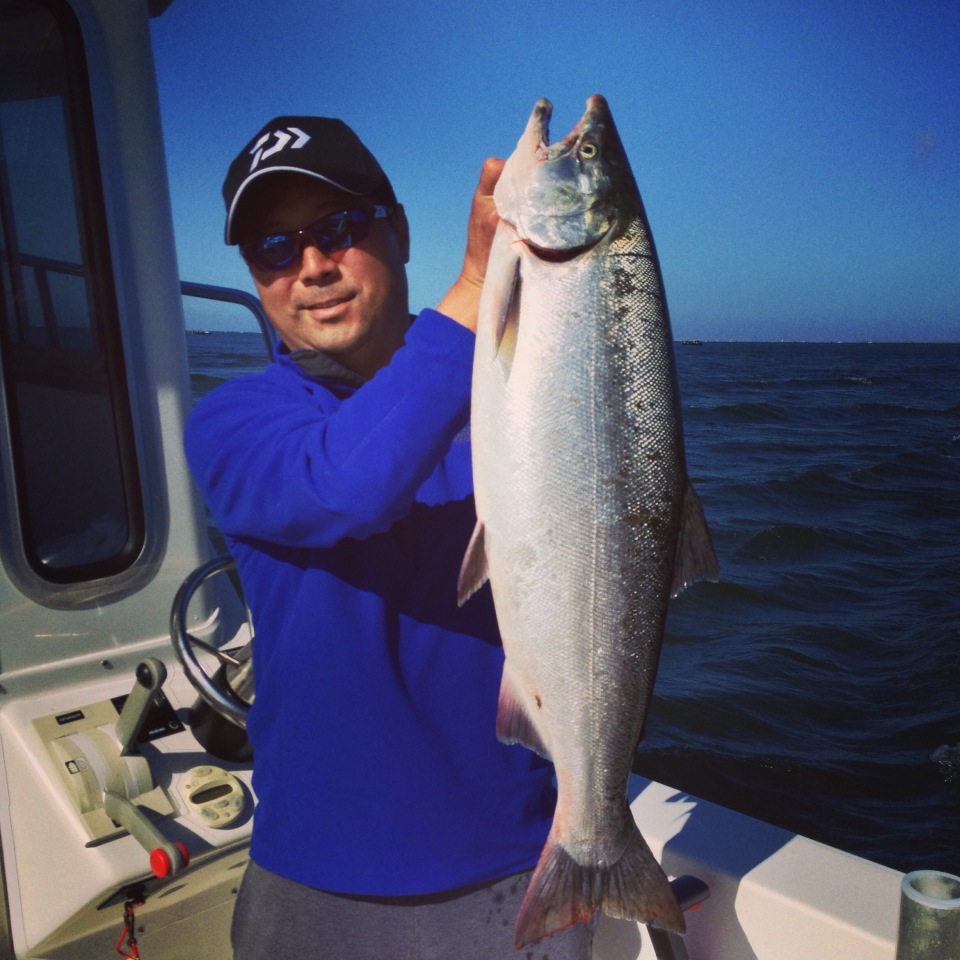
By Mark Yuasa
There’s a buzz in the air, and we’re not talking about the first day of autumn.
As we speak numerous options are blooming right before our eyes ranging from excellent fall chinook and coho returns to the Columbia River to the much highly anticipated opening next week of the coastal razor clam digging season.
First off, if you’ve been tracking the migration path of chinook and coho up the Columbia River then obviously you know it’s like a runaway freight train gaining steam as they move upstream.
“There will be a decent return of coho to the tributaries and the chinook returns seem to be tracking fairly well,” said Quinten Daugherty, a Washington Department of Fish and Wildlife (WDFW) biologist.
A joint “fact sheet” released by Washington and Oregon fisheries shows the fall chinook return this season is the sixth highest cumulative adult fish count to date in the past 10 years. The Bonneville Dam passage through Thursday (Sept. 9) totals 215,653 adult and 35,203 jack fall chinook.
The hatchery-mark chinook rate is approximately 57.8%, which is higher than average. The adult chinook passage average is 44.2% complete by Sept. 8, which means more are still enroute.
This jump in fall salmon numbers will allow state fishery managers to reopen the catch and keep fishery for chinook and hatchery-marked coho beginning this Saturday (Sept. 11) on the Lower Columbia River mainstem from Warrior Rock/Bachelor Island to the Bonneville Dam deadline. Daily limit is six salmon, only two may be adult fish, and only one may be a chinook. Release all steelhead and wild coho through Oct. 31.
The Camas Slough (Columbia waters north of Lady Island) remains closed to angling for, and retention of salmon and steelhead through Sept. 30. The Columbia mainstem from Tongue Point to Warrior Rock also remains closed.
Based on sampling by WDFW, the adult chinook count to date includes 157,314 bright stock fish; 35,263 adult tule chinook; and 15,317 “stubby” tule chinook, which are jack aged fish that grow to just over the adult size criteria for window counts through Sept. 8.
The pre-season projection for Spring Creek tule chinook at Bonneville Dam of 29,150 has been exceeded. Bright stock chinook counts are consistent with the pre-season expectation of 357,360 at Bonneville Dam.
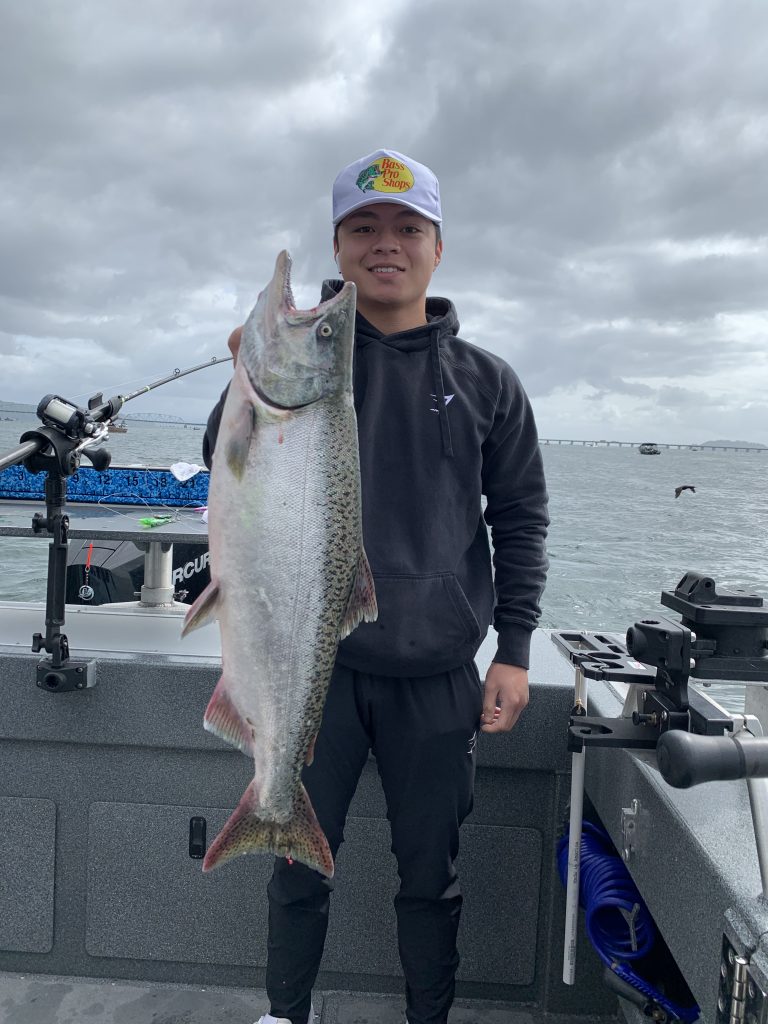
The adult fall chinook count at McNary Dam through Sept. 8 is 63,547 which is greater than the 60,000 fish management goal, and bodes well for the Hanford Reach fishery that should peak by the middle of this month. Based on 10-year average run timing the run at McNary Dam would only be 19% complete.
The Spring Creek Hatchery has begun to collect broodstock and has more than 17,000 fish and will achieve its broodstock collection target.
The adult chinook count at Lower Granite Dam through September 8 is 11,790. This is the highest count to date since Lower Granite Dam construction. Based on 10-year average run timing the run would be expected to be 15% complete on Sept. 8.
Columbia River coho are returning at an all-time high, and the largest count to date since Bonneville Dam was constructed in 1938.
Through Thursday (Sept. 9) a total of 100,980 adult coho and 5,878 jack coho have passed Bonneville Dam for this run year. The coho run at Bonneville is typically 27.1% complete by this date (38.7% for the early run through September). The adult coho clip rate at Bonneville is 23.7% to date.
The forecast calls for more than 1.5-million adult coho (181,000 in 2020, and an actual return of 363,600) are expected with 338,833 heading back to lower river tributaries.
Buoy 10 anglers at the Lower Columbia mouth have been finding consistent catches of large-size coho in the 12 to 20-plus pound range. Catch rates have ranged from 0.47 to 0.65 coho per rod, and 0.19 on slow days, most of which are few and far in between.
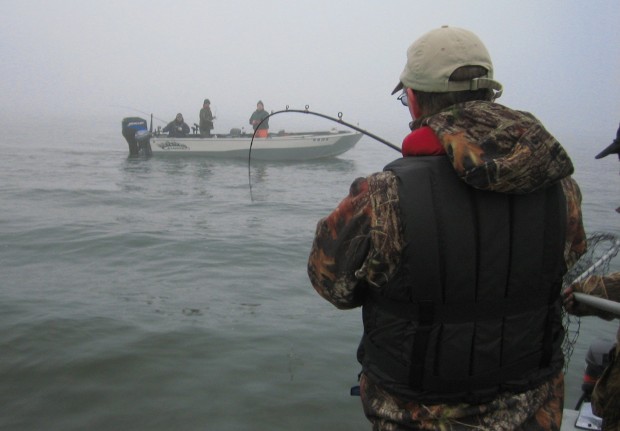
There are two components of the Columbia coho runs – the early, or A run, and the late, or B run. The early-timed run shows up in September, and the late run makes its entrance in October and November.
In the Lower Columbia expect some very good coho fishing in the Cowlitz River where the late-timed hatchery coho forecast is 156,690, and fishing is usually good anytime you see returns of 20,000 to 30,000. Look for this fishery to be gangbusters now through October.
The Cowlitz is closed for chinook retention, but there is a possibility it could have a chinook fishery later in the season if hatchery spawning escapement goals are achieved.
“We’re going to have ample fishing opportunities on the Cowlitz,” said Todd Daniels, owner of Tall Tails Guide Service (http://talltailsguideservice.com/ or 206-437-8766). “Historically it starts to really pick up about the third week of September, and peaks by the middle of October, after we see the first autumn rainfalls.”
The Lewis River is expecting 71,329 early-timed coho and 57,984 B-run coho that will generate decent action in the months ahead. The North Fork Lewis should be very good when a large return of lower river wild chinook arrives from October through November. The North Fork Lewis goes to non-select for chinook and hatchery coho beginning Oct. 1.
Expect fair to good coho fishing in the Washougal clear into early December. The Kalama coho usually peaks by the first or second week of October. Other good coho spots are the mouth of Toutle and Elochoman.
Tossing a big gob of salmon eggs is one of the top choices by guides like Daniels, but another popular choice is twitching jigs. Others like to run Wiggle Warts and a size 3 or 5 spinner depending on water conditions.
Remember, coho are aggressive biters in rivers, and aren’t feeding and just hitting lures that are invading their fishing holes.
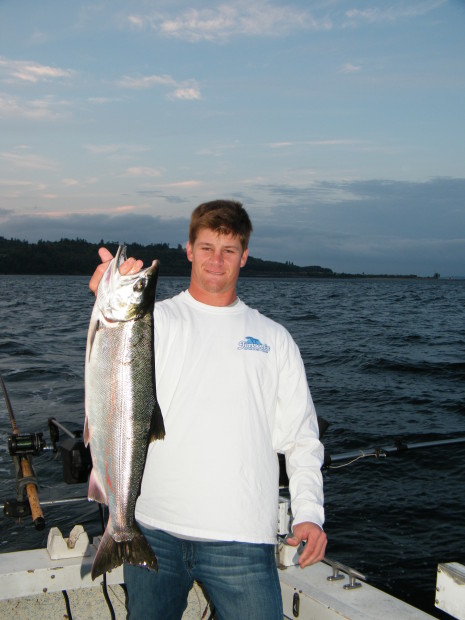
You can keep tabs on Columbia fall salmon numbers by viewing the Bonneville Dam fish counts at https://www.fpc.org/currentdaily/HistFishTwo_7day-ytd_Adults.htm.
Closer to the greater Seattle area, the coho action around Puget Sound is just starting to pick up at all the usual spots like West Point south of Shilshole Bay, in front of the Shilshole Marina breakwater, Elliott Bay, Meadow Point north to Richmond Beach, Jefferson Head, Point Monroe, Possession Bar, Point No Point, west side of Whidbey Island and across at Midchannel Bank off Port Townsend, San Juan Islands and Strait of Juan de Fuca between Sekiu and Port Angeles.
The Westport Boat Basin coho fishery has also started to pick up for those without a boat. These net pens began producing coho in 1975, and are operated by the Port of Grays Harbor and students from nearby Ocosta High School. The 200,000 fry are supplied by the WDFW hatchery at Bingham Creek each year, are raised in net pens then released as fingerlings and return 2 or 3 years later.
The north end of the basin is where most coho will congregate. Anchovy bait under a float works but will also attract some birds so many will use a very small jig like a Pt. Wilson Dart or Buzz Bomb. A Blue Fox 7/8 oz. spinner works too. Also be sure to throw a crab pot out while you’re fishing.
Final word anticipated soon for razor clam digs
Expect WDFW to announce approval on the first coastal razor clam digs of the 2021-2022 season by early next week.
That first dig is tentatively set to begin on Friday (Sept. 17). The final test samples are at the Department of Health lab, and the good news is the first test results were well under the action level.

Once approved diggers will find an estimated 56.3-million-plus razor clams lying beneath the sand on all four beaches.
Due to the large abundance of razor clams on open beaches, WDFW decided to raise the daily limit from 15 to 20 razor clams through Dec. 31. Diggers must keep the first 20 clams dug regardless of size or condition.
Diggers also need to keep clams in their own bucket, container or clam mesh net. Sharing is illegal. Diggers age 15 and older must have a valid license.
Wastage kills millions of clams annually, and it is illegal to dig up a clam and reinsert it back into the hole. State fisheries says 80 to 90 percent of wasted clams die because their shells are broken, necks are cut off or they’re improperly replanted into the sand.
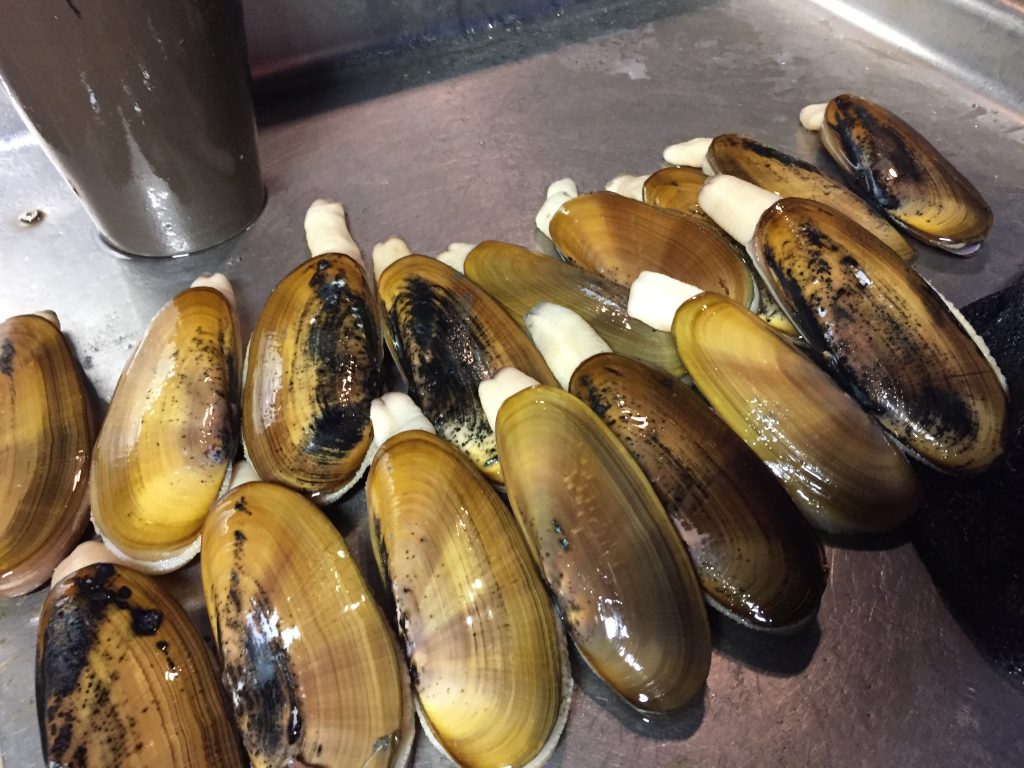
The first digs of the season are morning low tides on Sept. 17, -0.4 feet at 4:30 a.m. at Long Beach, Twin Harbors, Mocrocks; Sept. 18, -0.5 at 5:22 a.m. at Long Beach, Twin Harbors, Copalis; Sept. 19, -0.6 at 6:06 a.m. at Long Beach, Twin Harbors, Mocrocks; Sept. 20, -0.5 at 6:45 a.m. at Long Beach, Twin Harbors, Copalis; Sept. 21, -0.2 at 7:21 a.m. at Long Beach, Twin Harbors, Mocrocks; and Sept. 22, 0.3 at 7:54 a.m. at Long Beach, Twin Harbors, Copalis.
The it switches to evening low tides on Sept. 23, 0.3 at 8:58 p.m. at Long Beach, Twin Harbors, Mocrocks; Sept. 24, 0.4 at 9:36 p.m. at Long Beach, Twin Harbors, Copalis; and Sept. 25, 0.5 at 10:15 p.m. at Long Beach, Twin Harbors, Mocrocks.
Other morning low tide dates are Oct. 3 and 5 at Long Beach, Twin Harbors and Copalis; and Oct. 4 at Long Beach, Twin Harbors and Mocrocks.
Additional evening low tide dates are Oct. 6, 8, 10, 20, 22 and 24; Nov. 3, 5, 7, 9, 17, 19, 21 and 23; and Dec. 2, 4, 6, 8, 15, 17, 19, 21, 23 and 30 at Long Beach, Twin Harbors and Mocrocks; Oct. 7, 9, 11, 19, 21, 23 and 23; and Nov. 4, 6, 8, 10, 16, 18, 20, 22 and 24; and Dec. 1, 3, 5, 7, 9, 16, 18, 20, 22 and 31 at Long Beach, Twin Harbors and Copalis.
Kalaloch Beach is closed for the 2021-2022 season due to low clam populations. Final approval for all beaches is usually announced a week before the dates, pending marine toxin tests.

